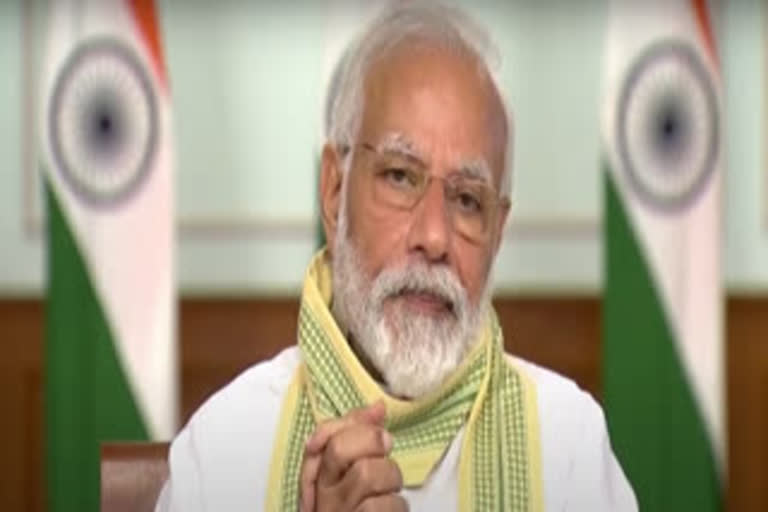New Delhi: Prime Minister Narendra Modi on Tuesday held a meeting with the country's top defence and foreign affairs officials and the National Security Advisor (NSA) over the prevailing situation at the Line of Actual Control (LAC) with China.
NSA Ajit Doval and the Chief of Defence Staff, General Bipin Rawat, were part of the meeting. During the meeting, Modi wanted to know how to end the standoff and resolve the issue.
Earlier in the day, Union Defence Minister Rajnath Singh held a meeting with General Bipin Rawat and the three service chiefs to understand the prevailing ground situation of the face-off in Ladakh and to discuss the next move of the forces.
Sources said that the deliberation over the matter carried on for more than an hour. Singh was briefed about the Indian response in matching up to the Chinese troop mobilisation.
It was clarified during the meeting that the Indian Army will hold its fort and talks to defuse the situation.
It was also decided in the meeting that road constructions must continue and the Indian fortifications and troop deployment must match the Chinese.
Earlier, the Indian Army and China's People's Liberation Army held several meetings to resolve the face-off in Eastern Ladakh at the Line of Actual Control. However, no breakthrough has taken place.
The last meeting took place on Sunday, but many things remained unresolved, said sources, adding that more commander-level talks are in the pipeline to resolve the issues.
Sources said that there have been five rounds of talks between the military commanders on the ground, but there has been no breakthrough.
A top Indian Army officer told reporters, "No breakthrough. Status quo is maintained."
READ: Senior Indian and Chinese military commanders in talks to defuse situation at LAC
He also said that the situation will be resolved, but the Indian Army will continue with its construction work along the LAC.
Sources said that there has been a troop build-up on both sides and there are three to four places where there is an eyeball to eyeball situation since May 5. Across Line of Actual Control, both sides have deployed over 1000 troops in an eyeball to eyeball situation at four places.
Indian Army is keeping a close watch in the Pangong Tso sector of Eastern Ladakh and the Galwan Valley region where the Chinese have enhanced deployment. Other than Pangong Tso, which is extremely sensitive, the other places that are volatile in the wake of the recent escalation are Trig Heights, Demchok and Chumar in Ladakh, which form the western sector of the India-China frontier.
The disengagement took place in Eastern Ladakh after troops came to blows on May 5 and were involved in a face-off till the morning of May 6 when troops from both sides clashed, leaving several injured. Sources reported a massive troop build-up by China on their side, not too far away from the point of the standoff.
It was also observed that enhanced patrolling was being carried out by China in the Pangong Lake. They have also increased the number of boats.
The face-offs were triggered by Indian road construction and development of infrastructure which the Chinese objected to.
However, the Indian Army has maintained that there is no continuing face-off at the Pangong lake and there is no build-up of armed troops in the area.
On Friday, Indian Army chief General Manoj Mukund Naravane visited Leh, the headquarters of 14 Corps in Ladakh, and reviewed the security deployment of the forces along the LAC with China. He held a meeting with Northern Command (NC) chief, Lieutenant General Y.K. Joshi, and the 14 Corps commander, Lieutenant General Harinder Singh, and other officers to know the ground situation at the forward locations along the LAC. Later in the day, he returned to Delhi.(IANS)



